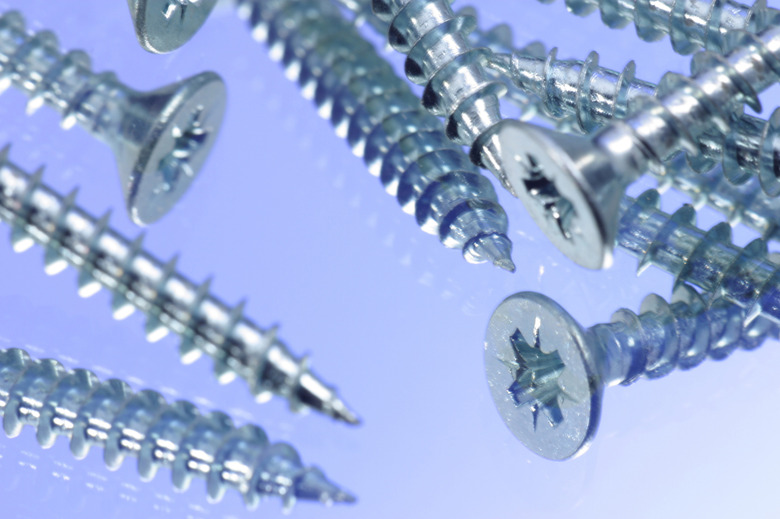What Is The Difference Between Wood Screws And Drywall Screws?
We may receive a commission on purchases made from links.
Just like most things in life, when it comes to screws, there's no one size that fits all. Different jobs have different requirements, and drywall screws are intended for use with drywall, while wood screws are ... well ... intended for use with wood. This distinction is important because drywall screws are quite specifically designed to sink into the paper coating on the face of a drywall panel. Wood screws are thicker and stronger than drywall screws and have a different heads that are better suited to wood.
Drywall Screws
- Thin shank, fully threaded.
- Brittle and relatively weak.
- Bugle-shape head designed for drywall face paper.
- Made for wood or metal studs.
- Not corrosion-resistant.
Wood Screws
- Thicker shank, partly threaded.
- More flexible and relatively strong.
- Several head shapes.
- Made for wood, plastic, and other materials.
- May be corrosion-resistant.
What Are Wood Screws?
What Are Wood Screws?
There are many types and designs of wood screws, which makes sense given their wide application across numerous types of woodworking projects. These types differ in the shape of the head, the recess type, and the thread design in addition to various lengths and gauges.
A flat head is the most common for woodworking, in which the screw is sunk to the point that the head is perfectly flush with the surface. You'll also find oval or round heads, also called pan heads, which are used on surfaces that you would not sink the head into, such as plastic. Some oval- or round-head screws are decorative; you've seen brass screws, for instance, protruding from upholstery.
Threading is another differentiator. Standard wood screws, those that are designed for most wood projects, have no threads on the top of the shank, a design that helps the screw pull the top piece of wood tight to the bottom piece while avoiding having the screw get stuck in the top piece.
Beyond standard wood screws, there are multiple screws designed for heavier-duty use or specialty projects. Among these are deck screws, which have larger heads and are made of corrosion-resistant materials. Then there are pocket screws with self-drilling tips and bigger heads used to prevent splitting when joining two pieces of wood using pocket holes. Lag screws, also called lag bolts, and structural screws are much heavier duty and larger than standard wood screws and are used for structural applications.
What Are Drywall Screws?
What Are Drywall Screws?
With thin shanks and oversized heads, drywall screws drive easily and quickly through drywall and into the wood or metal stud behind. Their shanks are usually the same size as a #6 wood screw, but their heads equal that of a #8 wood screw, although their length can vary depending on how they are used.
They are made of hardened steel, usually with a black phosphate finish. Further, they are more brittle than wood screws; all of this makes them prone to breaking if you try to use them on wood.
One of the most distinctive characteristics of drywall screws is their unique bugle-shaped head that forms a smooth curve between the shank and the underside of the head. This helps them press into the drywall's face paper and make a small depression without breaking the paper, which ruins the screw's holding power. The depression is filled with joint compound during the drywall finishing process to create a perfectly smooth surface. Drywall screws usually have a Phillips head, although they might have a square head, both of which make it easier to maintain the connection between the screwdriver tip and the screw itself.
Drywall screws may have fine or coarse threads; if you look at the screw, the more threads it has, the "finer" the threads are. W-type drywall screws have coarser threads and are used to attach drywall to wood studs, while S-type drywall screws feature finer threads and are designed to attach drywall to metal studs. G-type drywall screws attach drywall to drywall and also have fine threads but of alternating high and low thread heights.
